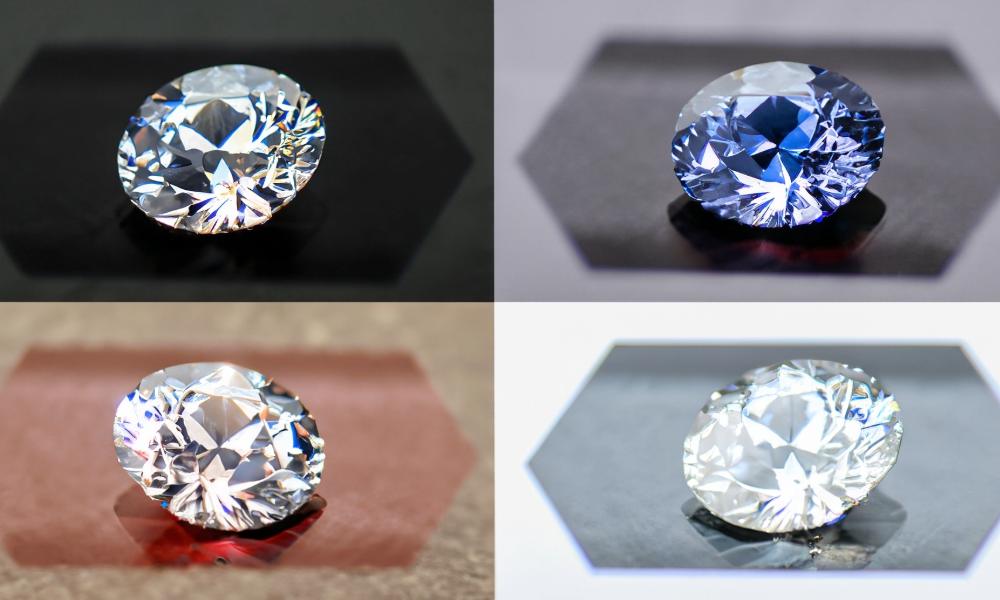
Diamonds have long been a symbol of luxury, love, and status. They are revered for their beauty, durability, and rarity. However, as technology advances and societal values evolve, a new contender has emerged in the diamond industry: lab-grown diamonds. These man-made gems are becoming increasingly popular, offering an ethical, sustainable, and often more affordable alternative to traditionally mined diamonds. But how do these two options compare, and what should consumers know before making a decision?
What Are Mined Diamonds?
Mined or lab grown diamonds, also called natural diamonds, are formed deep within the Earth under extreme pressure and temperature conditions. Over millions of years, carbon atoms crystallize into a diamond structure, which is then brought to the surface by volcanic eruptions or geological shifts. Mining these diamonds requires digging deep into the Earth’s crust, often resulting in significant environmental disruption and raising ethical concerns, particularly around the treatment of workers in certain regions.
Pros of Mined Diamonds:
- Natural Rarity: Mined diamonds are limited by natural availability, which gives them a sense of exclusivity. The scarcity of high-quality diamonds increases their desirability and value.
- Cultural and Historical Significance: Diamonds have a long-standing tradition as symbols of love and commitment. The history and mystique surrounding mined diamonds contribute to their perceived value.
- Investment Potential: Some people view natural diamonds as investments that can appreciate over time, especially rare and flawless stones.
Cons of Mined Diamonds:
- Environmental Impact: Diamond mining can result in deforestation, loss of biodiversity, and soil degradation. It is also an energy-intensive process that can lead to significant carbon emissions.
- Ethical Concerns: “Blood diamonds” or “conflict diamonds” are often associated with violence, exploitation, and human rights abuses in certain regions. Efforts like the Kimberley Process have been introduced to reduce the impact, but challenges persist.
- High Cost: Mined diamonds tend to be more expensive due to their rarity, extraction costs, and traditional retail markup.
What Are Lab-Grown Diamonds?
Lab-grown diamonds, also known as synthetic or cultured diamonds, are created in controlled laboratory environments using high-pressure, high-temperature (HPHT) or chemical vapor deposition (CVD) methods. These techniques mimic the natural diamond-forming process but in a matter of weeks or months, rather than millions of years.
Despite being man-made, lab diamonds are chemically, physically, and optically identical to mined diamonds. They share the same carbon structure, hardness, brilliance, and fire, and even diamond graders cannot distinguish between the two without specialized equipment.
Pros of Lab-Grown Diamonds:
- Environmental Benefits: Lab-grown diamonds have a much smaller environmental footprint compared to mined diamonds. They require less land disruption, water, and energy, and do not involve harmful mining practices.
- Ethical Considerations: Since lab-grown diamonds are created in controlled environments, they eliminate concerns about human rights abuses and exploitation often associated with mined diamonds. Consumers who prioritize ethical sourcing can feel confident that lab-grown diamonds are conflict-free.
- Affordability: Lab-grown diamonds are typically 20-40% less expensive than mined diamonds. This price difference can make larger or higher-quality stones more accessible to a broader range of consumers.
- Transparency: Lab-grown diamonds often come with more transparency in terms of origin, quality, and certification. This can give consumers peace of mind knowing that the diamond they purchase is free from ethical or environmental concerns.
Cons of Lab-Grown Diamonds:
- Perceived Value: While lab-grown diamonds are nearly identical to mined diamonds in terms of appearance and properties, some people view them as less valuable because they are not rare and are created in a lab. This can affect their resale value.
- Limited Tradition: While lab-grown diamonds are gaining acceptance, they lack the centuries-old tradition and cultural significance associated with natural diamonds. For some buyers, the idea of purchasing a “real” diamond, forged over millions of years, holds greater sentimental or symbolic value.
- Market Perception: There is still a degree of skepticism around the long-term value and social status associated with lab-grown diamonds. As the market continues to evolve, public perception may shift, but for now, mined diamonds are often seen as the more prestigious option.
Which Should You Choose?
The decision between a mined or lab-grown diamond depends on individual priorities, values, and budget.
- If environmental sustainability and ethical sourcing are important to you, a lab-grown diamond might be the right choice. It allows you to enjoy a beautiful, high-quality diamond while minimizing your impact on the planet and avoiding the ethical dilemmas associated with mining.
- If tradition, rarity, and investment potential are important to you, a mined diamond may be the better option. Natural diamonds have a long-standing reputation for being a symbol of commitment and a store of value.
For many consumers, lab-grown diamonds offer a compelling alternative, offering similar beauty and quality at a fraction of the price and with fewer ethical and environmental concerns. However, the choice ultimately depends on how you view the intersection of luxury, ethics, and personal values.
Conclusion
Mined and lab-grown diamonds each have their own unique advantages and challenges. As consumers become more informed about the implications of their purchasing decisions, the demand for lab-grown diamonds is likely to continue growing, offering a more sustainable, ethical, and affordable alternative to traditional mined diamonds. Regardless of the choice, both types of diamonds provide the timeless beauty and symbolism that make them enduring treasures.
